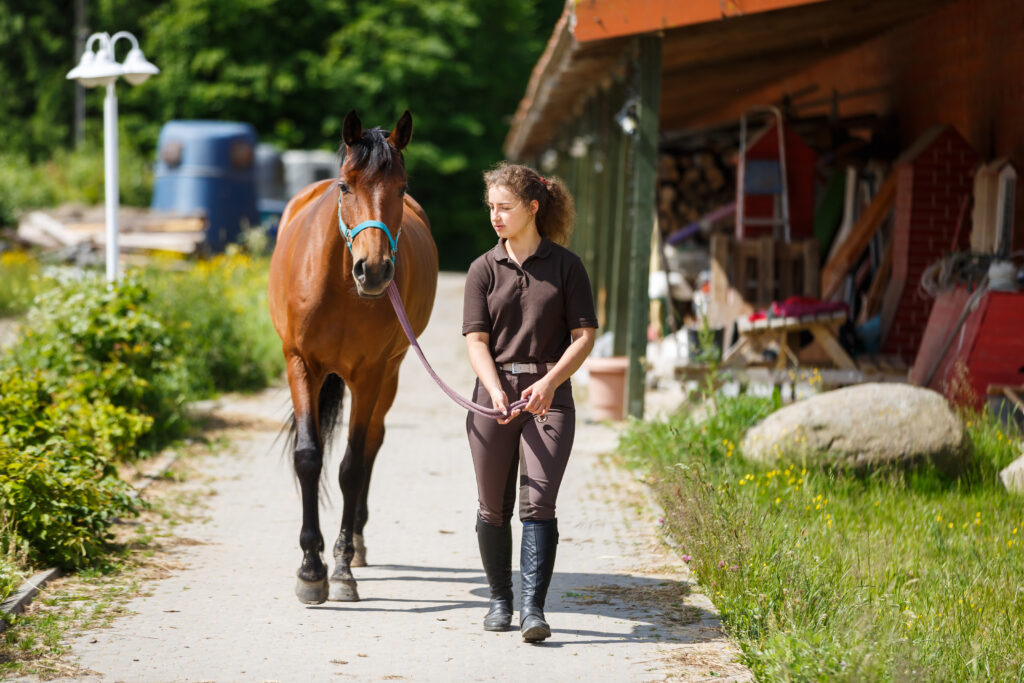When jogging a horse to check for lameness, head for footing that is as flat as possible. Research from England shows that even a slight incline can alter a horse’s gait enough to confound a lameness diagnosis.
The study conditions
For the study, University of Nottingham researchers affixed inertial sensors at the poll, withers, sacrum and points of the hip on 10 horses with previously diagnosed forelimb lameness and eight horses with hind-limb lameness. Each horse was then jogged in hand on a level surface as well as up and down a gentle slope of 2.4 degrees. The captured data was then analyzed for significant differences in asymmetry associated with the surface slope.
The findings

The researchers discovered that horses with hind-limb lameness exhibited less gait asymmetry when trotting downhill, as opposed to traversing flat or uphill surfaces. They noted considerable changes in poll movement (head bobbing) among individual horses when they traveled over flat or sloping surfaces. Most strikingly, two horses with hind-limb lameness appeared to be favoring the opposite leg when trotted on different inclines. The same was true of two horse with forelimb lameness
What the findings mean
These findings underscore the importance of using a flat surface for lameness exams in general. But that doesn’t mean sloped surfaces must always be avoided, the researchers say. In fact, knowing exactly how inclines affect lameness could potentially aid in diagnosis. “Further work is justified to elucidate the types of pathology associated with the most relevant changes in asymmetry which would allow the use of an incline to prioritize a list of differential diagnoses.”
Reference: “An objective study into the effects of an incline on naturally occurring lameness in horses,” Veterinary Medicine and Science, August 2022
Don’t miss out! The free weekly EQUUS newsletter delivers the latest horse health information right to your in basket! If you’re not already receiving the EQUUS newsletter, click here to sign up. It’s *free*!








